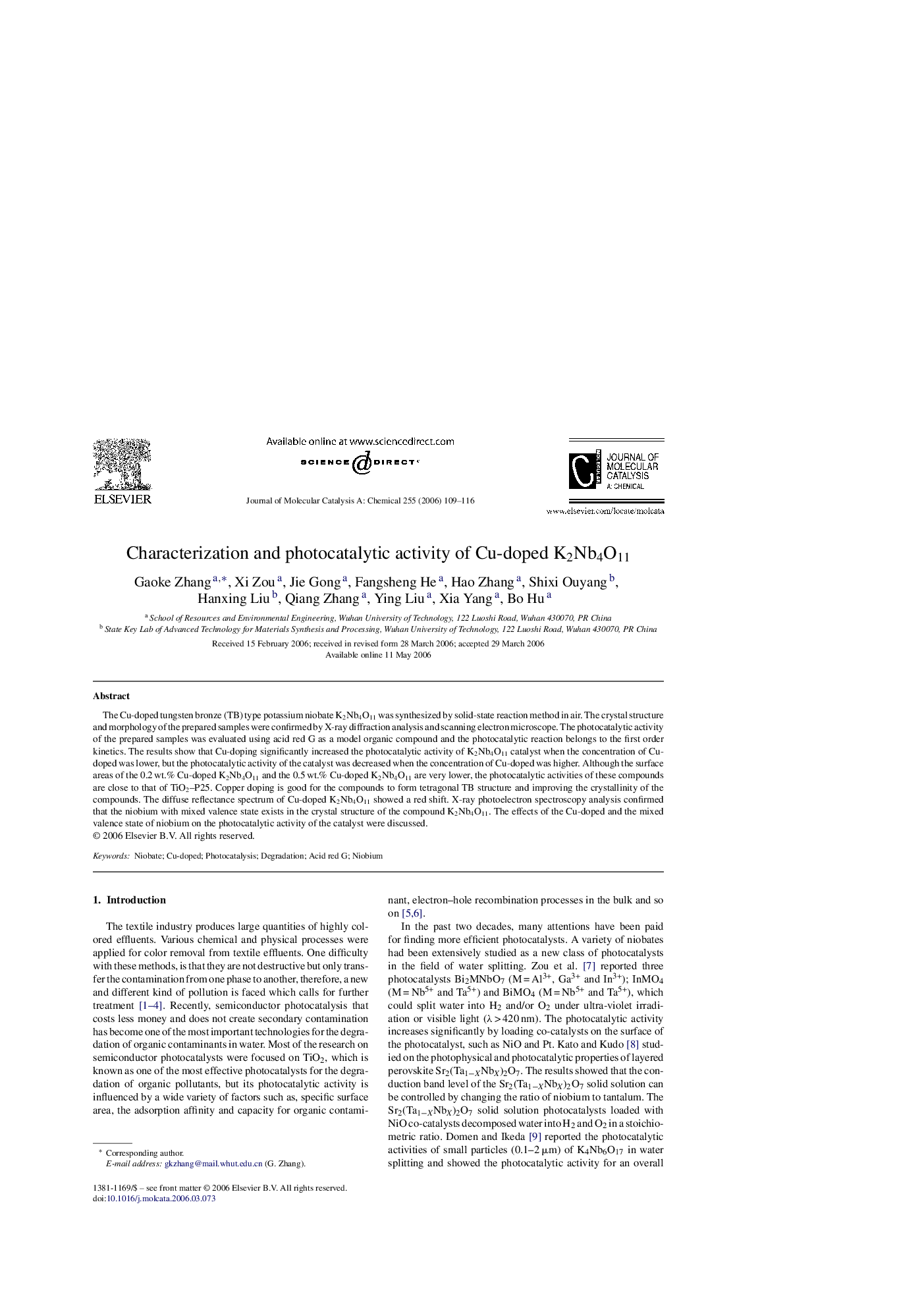| Article ID | Journal | Published Year | Pages | File Type |
|---|---|---|---|---|
| 68559 | Journal of Molecular Catalysis A: Chemical | 2006 | 8 Pages |
The Cu-doped tungsten bronze (TB) type potassium niobate K2Nb4O11 was synthesized by solid-state reaction method in air. The crystal structure and morphology of the prepared samples were confirmed by X-ray diffraction analysis and scanning electron microscope. The photocatalytic activity of the prepared samples was evaluated using acid red G as a model organic compound and the photocatalytic reaction belongs to the first order kinetics. The results show that Cu-doping significantly increased the photocatalytic activity of K2Nb4O11 catalyst when the concentration of Cu-doped was lower, but the photocatalytic activity of the catalyst was decreased when the concentration of Cu-doped was higher. Although the surface areas of the 0.2 wt.% Cu-doped K2Nb4O11 and the 0.5 wt.% Cu-doped K2Nb4O11 are very lower, the photocatalytic activities of these compounds are close to that of TiO2–P25. Copper doping is good for the compounds to form tetragonal TB structure and improving the crystallinity of the compounds. The diffuse reflectance spectrum of Cu-doped K2Nb4O11 showed a red shift. X-ray photoelectron spectroscopy analysis confirmed that the niobium with mixed valence state exists in the crystal structure of the compound K2Nb4O11. The effects of the Cu-doped and the mixed valence state of niobium on the photocatalytic activity of the catalyst were discussed.
Graphical abstractThe Cu-doped TB potassium niobate K2Nb4O11 was synthesized by solid state-reaction method in air, which shows high photocatalytic activity to photodegrade acid red G under UV irradiation. The effects of the Cu-doped and the mixed valence state of niobium on the photocatalytic activity of the catalyst were discussed. The Cu-doped K2Nb4O11 may find potential application in water treatment fields. Figure optionsDownload full-size imageDownload as PowerPoint slide
